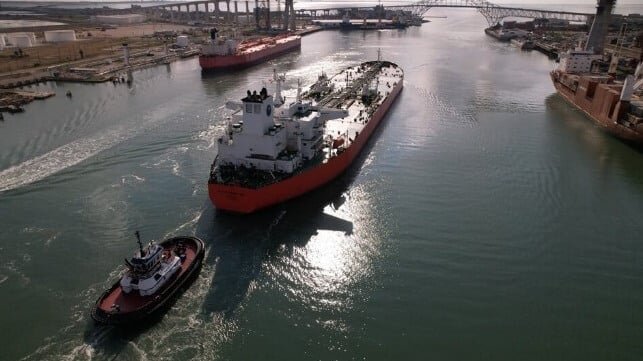The Port of Corpus Christi Solidifies Leadership in Energy Exports with Completion of $625 Million Channel Improvement Project
The Texas Port of Corpus Christi is making significant strides in cementing its position as a leader in energy exports with the recent completion of a massive $625 million channel improvement project. This project, which has been in the works for over three decades, now positions the port as a key player in the U.S. as the country looks to ramp up hydrocarbon exports, driven by policies under President Donald Trump.
Port of Corpus Christi: A Vital Energy Export Gateway
Already established as a leading U.S. energy export gateway, the Port of Corpus Christi serves as a major economic engine for both Texas and the nation as a whole. Ranking as the third-largest port in the United States in total waterborne tonnage, the port moves over 2.4 million barrels per day of crude oil to destinations outside the U.S. Additionally, it is the second-largest U.S. gateway for liquefied natural gas (LNG) exports.
Details of the Channel Improvement Project
The Channel Improvement Project focused on deepening the Corpus Christi Ship Channel from 47 feet mean lower low water (MLLW) to 54 feet MLLW. It also involved widening the channel from 400 to 530 feet, along with the addition of barge shelves. The comprehensive project, divided into four phases, began construction in 2017.
Phase 1 involved dredging the channel from the Gulf of Mexico to Harbor Island, followed by Phase 2 extending from Harbor Island to the west of the La Quinta junction. Phase 3 saw the channel extended from La Quinta to Chemical TB, with the final phase focusing on deepening and widening the channel from Chemical TB to Viola TB, ultimately improving approximately 11.9 miles of the channel.
As part of the project, around five million cubic yards of dredged material were used to restore marshes in the Corpus Christi and Nueces bays, along with the construction of a 2,000-foot breakwater in the Nueces Delta, which will connect to a planned 4,000-foot breakwater.
Financial Backing and Expected Benefits
The project, being capital-intensive, received funding from Corpus Christi’s internal resources, federal budget allocations from Congress, the U.S. Army Corps of Engineers, and private marine companies. The newly expanded waterway is anticipated to facilitate safe and efficient navigation for larger vessels, enabling cost savings of over $200 million annually for exporters.
Record Growth and Future Outlook
Corpus Christi has been experiencing steady growth in cargo throughput, with a five percent increase recorded in the first quarter of this year, moving 51.3 million tonnes of commodities. This growth was primarily driven by a surge in crude oil and LNG shipments, with record cargo movement of 206.5 million tonnes in 2024.
Expansion Plans and Industry Growth
While Corpus Christi solidifies its position, Houston, a competing port located further northeast on the Gulf Coast, is also expanding its channel. The U.S. Army Corps of Engineers allocated $33 million for the Houston Ship Channel Expansion, known as Project 11. The expansion of both ports’ capabilities, along with ongoing work on new LNG terminals, is crucial for the growth of the U.S. energy industry.

